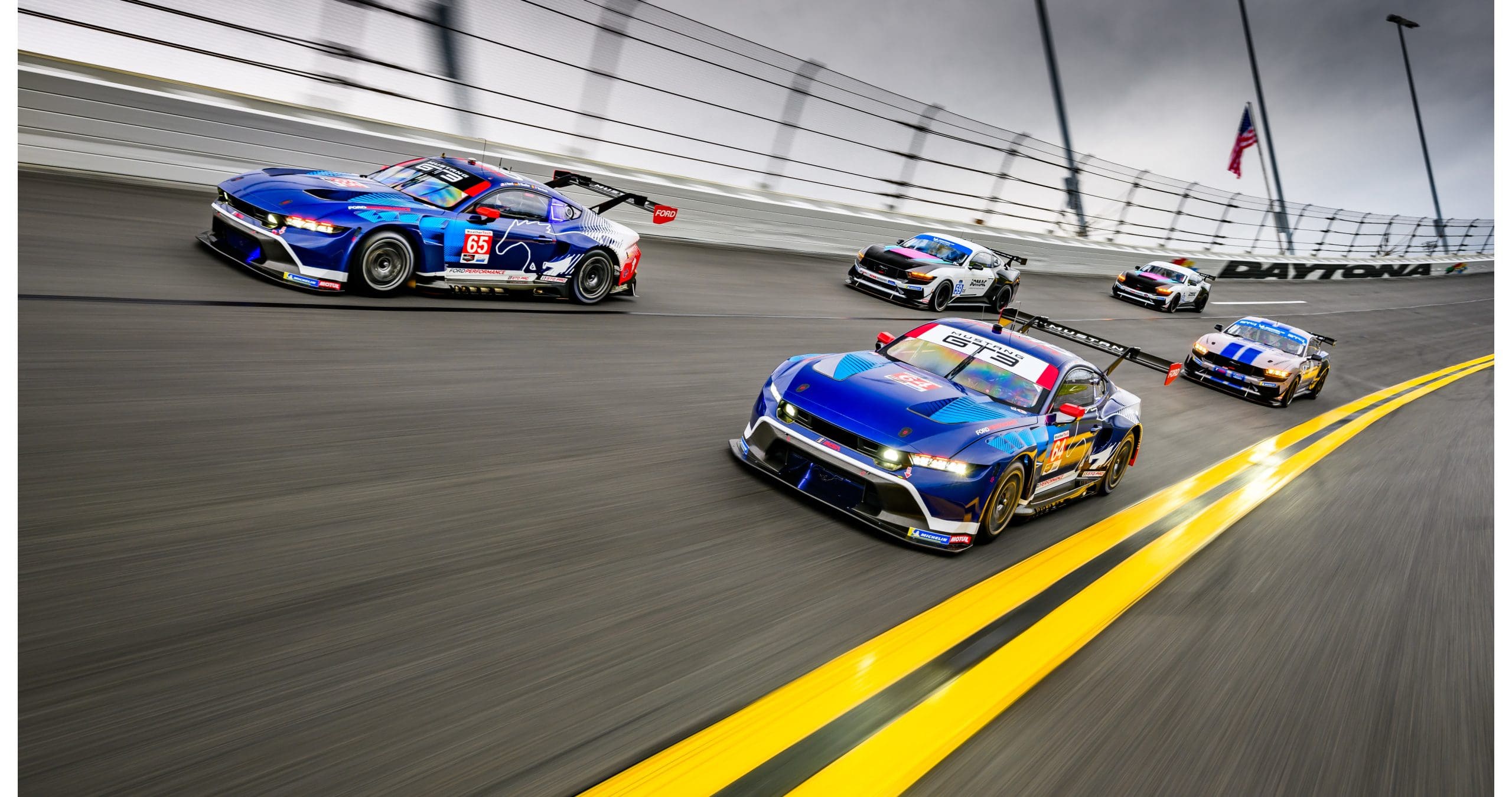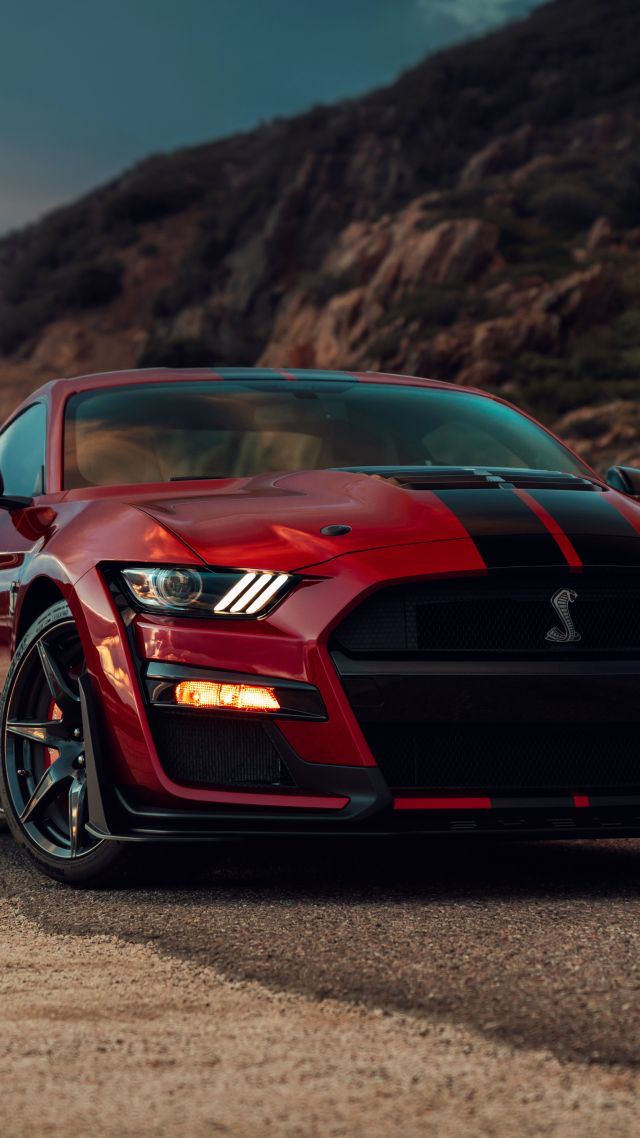Ever since its introduction, the Ford Mustang has been meant for one thing: To go fast. Developed during a time when Ford was aspiring to be the best of the best in racing, a lot of that DNA was passed down into the humble pony car, making it a staple of the American roadway.
Yet, because of that racing DNA, the Mustang was also destined to make its mark on the track. Not just going around in circles in NASCAR or tearing up a road course in Trans-Am, but also competing in endurance racing, drag racing, and to an extent in recent years even in rallying. Because of this, there are a lot of Mustangs that have been race-ready or race-prepped throughout the blue oval’s history, and today we’ll look at some of our personal favorites.
Do note, our opinion, like yours, is subjective. You may not agree with out list, or you might think we have the best list ever.
1965 Ford Mustang – Tour de France Automobile

Just a few short months after the classic Ford Mustang was introduced at the 1964 World’s Fair in New York, it landed in Europe and competed in the strenuous Tour de France Automobile. Different from the bicycle race, it was a “car breaker,” a multi-day race over seven stages between fixed points on French roadways. It was often the case that out of the starting entries, on average only 50% made it to the finish line.
For this race, Ford prepped two Mustangs with 289 cu V8’s (in place of the factory 260 cu engine), stiffer and more resilient suspension, disc brakes all around, and tore out a lot of the interior to make them as light as possible. Despite being such a new car, the Mustang definitely showed its mettle (and metal) and swept the top two spots in the Touring class.
As well, both Mustangs completed the race, being two of only 19 out of 56 touring cars to go the distance. They also came in eighth and ninth overall, only being beaten by absolutely legendary cars like the Ferrari 250 GTO and the Porsche 904. As a first showing, that is what you call “not bad.”
1965 Shelby GT350R – SCCA
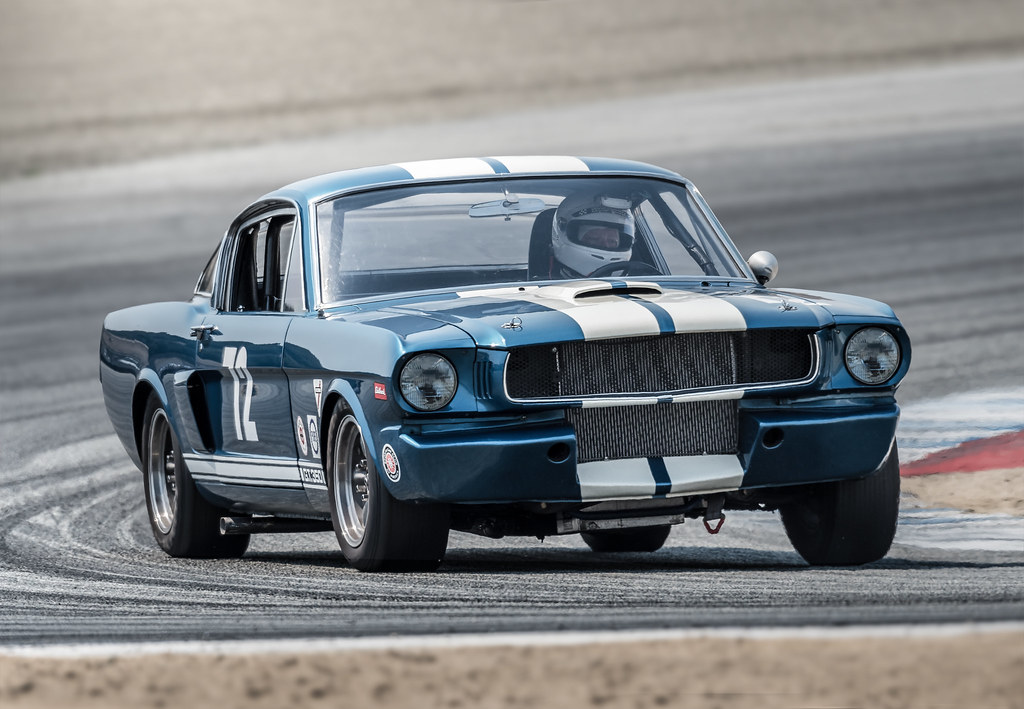
When the Shelby GT350 was revealed on January 27, 1965, it was tuned to produce 306 hp, the most powerful Mustang of the day. It was more powerful than the rare K-code Mustang with its 271 HP 289 cu V8, and because Carroll Shelby was a racer, it was a car that was just itching to be let loose on a track. While it was officially a Ford-Shelby partnership, the GT350 was always intended to be converted to racing, and the Shelby GT350R was that car in race trim.
So when the 1965 SCCA B-Production class applications opened, lo and behold there were 34 extremely rare Shelby GT350R conversions waiting to sign up. Developed to dominate that class, it went ahead and did just that, being B-Production champions for three years on the trot.
If the Tour de France Automobile Mustangs were the precursor, it was the GT350R that sealed the deal that Ford was here to play, and play for keeps. They did it domestically in the SCCA, and they did it internationally with the GT40 at Le Mans. No one was doubting that the blue oval could race anymore!
1969 & 1970 Mustang Boss 302/429 – SCCA/Trans-Am/NASCAR
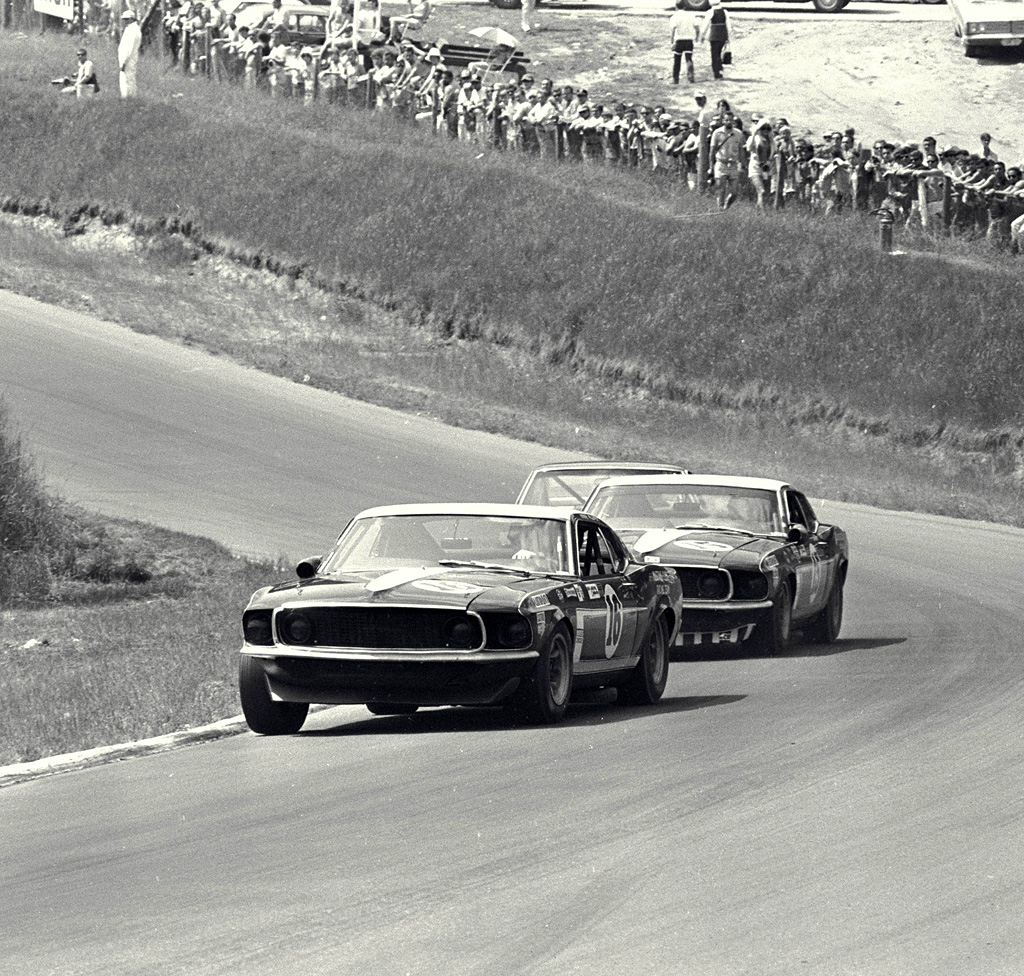
At the end of the 1960s, Ford wanted to create their own in-house Mustang racecars after Shelby was no longer in the picture. They decided the best place to start was with the Boss 302 and Boss 429. While they both carried the Boss name, they were both very different cars.
Developed for multiple championships such as Trans-Am and SCCA, the Boss 302 was a high performance beast that took the lessons learned from Shelby, that of adding handling to compliment the power. It became a favored race car, and within a year of introduction, it won the 1970 Trans-Am Championship with drivers such as Parnelli Jones and George Follmer.
The Boss 429, on the other hand, was the much rarer variant, as it featured the massive 7.0L big-block V8. The only reason it carried this was to allow for Ford to homologate the car as a “big engine” NASCAR racer, which it successfully did. However, by the time it was getting prepped to race in the series with all 375 horses under the hood, Dodge put out the Charger Daytone at 440 horsepower. Ford, in turn, scrapped the Boss 429 NASCAR program, but did sell the already built cars to customers. Because of the performance and rarity of the race-prepped Boss 429 NASCAR, it is one of the most valuable and desirable Mustangs on the market.
1969 Mustang Mach 1 – Drag Racing

While not officially a factory race car, as it was a series production model that sold so well that it resulted in the Mustang GT being discontinued, the Mach 1 did bring a lot of racing know-how to the average consumer.
This was exemplified with no less than four engine options on the order sheet, with many selecting the top of the range, 335 HP Cobra Jet R. At a time when 335 HP from the factory was scarcely believable in a series production car, the Mach 1 immediately found itself on the quarter-mile. In stock vs stock, it almost always won, and even with stock vs modified, it was winning some races.
The Cobra Jet nameplate on the side of the hood scoop became so synonymous with drag racing that to this day, every once in a while, Ford will still produce a bonkers, balls-out straight line monster and label it as a Cobra Jet.
1975 Ford Charlie Kemp Cobra II – IMSA
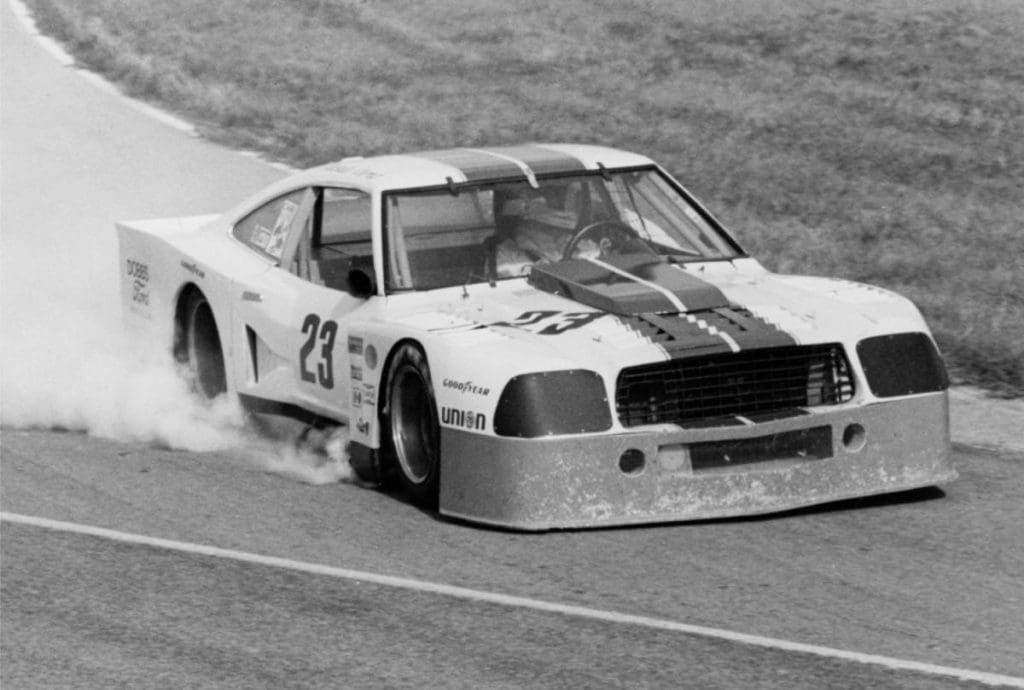
While the impact of the first generation Mustang on motorsports is readily apparent, it wasn’t until the second generation that chassis up conversions into full on dedicated race cars was done in earnest. Of those Mustangs, our favorite one has to be the wildest Mustang that saw the track in the 1970s, the 1975 Kemp Cobra II.
Starting with a bare chassis, it was modified to be 171 inches long, 74.5 inches wide, and had a 96.8 inch wheelbase. It scraped along with a hair under 3 inches of ground clearance, but it was still riding on Ford Cobra stock suspension, as per IMSA rules. What sets this car apart though was the absolute monster living under its hood: A Gapp and Roush modified 351 Cleveland V8 chucking down a fuel-injected 535 HP.
The engine was so powerful it needed to be connected to the rears through a NASCAR-spec Toploader four-speed manual with a Schiefer clutch and aerospace-grade aluminum flywheel. All that power hit the tarmac via 15 inch BBS wheels wrapped in Goodyear Blue Streak race tires. It topped out at a barely believable 212 MPH, and got there rather rapidly besides.
The Kemp Cobra II was so competitive and so powerful that it was finally retired in 1981, after it was finally getting routinely beaten by more modern race cars. This, without any financial backing from Ford at all. Charlie Kemp thus became a motorsports hero for an entire generation of Mustang enthusiasts, and his name is still just as revered today for putting one of the most mental Mustangs manageable into the motorsports movement.
1985 Ford Mustang GTO – SCCA/IMSA
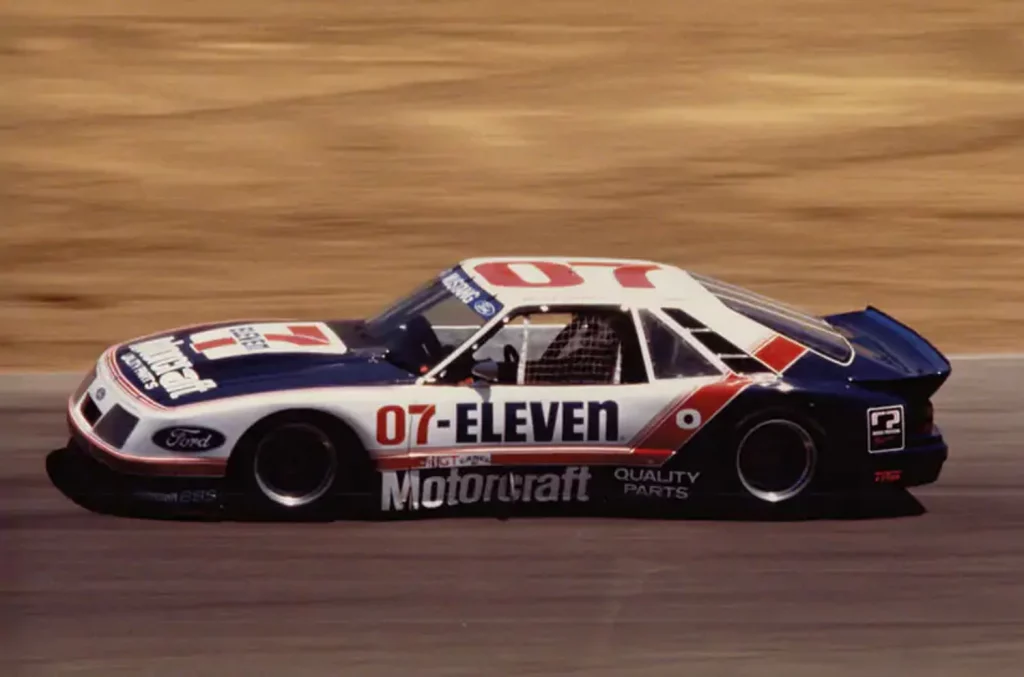
Never fear, Fox Body enthusiasts, there is a favorite Fox Body in our list: The 1985 Mustang GTO. We’re not talking the rare road car version, we’re talking the dedicated factory racing car that made quite a few statements in its time.
Whole the road car was the basis for the SCCA version of the GTO, it was the IMSA super-modified version that became legendary. In a time when racing was still viewed as a mostly male sport, a young rookie driver named Lyn St. James slid into the driver’s seat of her IMSA Mustang GTO in 1985. That year, she crossed the finish line in first place three times.
This not only proved that women were just as competitive as men behind the wheel, it also was the first recorded IMSA GT win by a solo woman driver, the first recorded multiple wins by a solo female driver, and the first overall multi-class race win by a solo female driver. All behind the wheel of one of the best Fox Body racing versions of the Mustang!
2024 Ford Mustang GT3 – FIA WEC/24 Hours Of Le Mans/Others
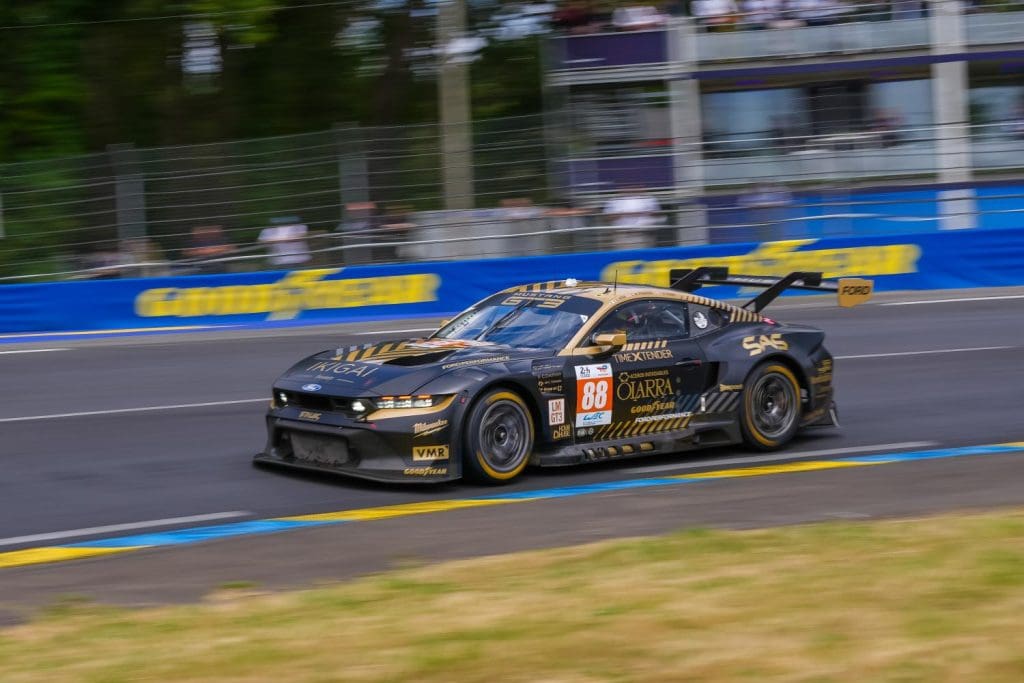
We admit, after the 1980s were over, Mustangs did seem to disappear from a lot of racing around the world. There were a few wildcard entries in endurance racing or one-off entries in road course sprints, but nothing really official was seen until January of 2024, with the reveal of the factory GT3 and GT4 program from Ford.
This isn’t just a fun splash on the track either. Built to exacting FIA standards, the Mustang GT3 is eligible for every series around the world that follows FIA specs. This includes the International GT Challenge, the FIA World Endurance Championship, the Bathurst 12 Hours race, the 6-, 12-, or 24- Hours of “Insert Location Here.” This is a serious, multi-billion dollar push to get the Mustang name back where it belongs, on the track.
To back up the hype, the Mustang GT3 raced at the 24 Hours of Daytona, where it placed respectably. However, Daytona is often seen as the prelude to the more important race, the 24 Hours of Le Mans. This year, the #88 Proton Competition Mustang GT3 not only completed the race without any major issues, it also reached the podium third in class on debut.
One of the things that many commentators around the world stated was that you really didn’t have to see the Mustang GT3 to know it was still running, you heard it about 10 seconds before it came into sight. Loud and powerful, it was beating such legends at Lamborghini, Aston Martin, Ferrari, and even American rivals Chevrolet around the track.
As well, the Mustang GT3 does have an extremely limited edition road legal customer variant, but you can’t buy it as all of them have been sold: The Mustang GTD


